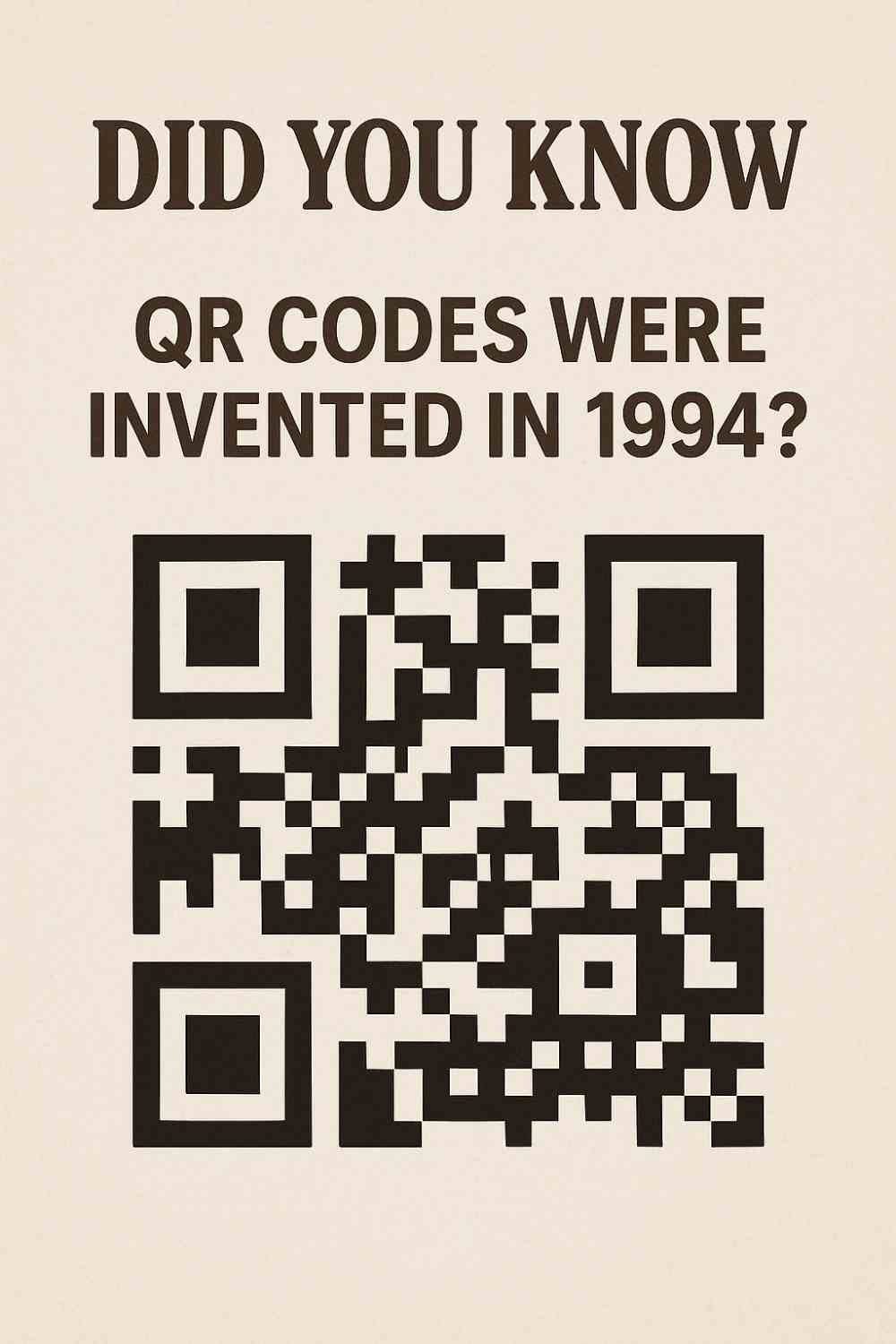 You’ve probably scanned a QR code today—maybe to check a menu, pay a bill, or even board a flight. But here’s the kicker: these pixelated squares have been around since 1994. That’s right, they predate Google, smartphones, and even the dial-up internet screech that haunted our childhoods. How’s that for a tech time warp?
You’ve probably scanned a QR code today—maybe to check a menu, pay a bill, or even board a flight. But here’s the kicker: these pixelated squares have been around since 1994. That’s right, they predate Google, smartphones, and even the dial-up internet screech that haunted our childhoods. How’s that for a tech time warp?
The Birth of the QR Code: A Solution No One Saw Coming
Back in the early ‘90s, barcodes were the undisputed kings of inventory tracking. But they had a glaring flaw: they could only hold about 20 alphanumeric characters. Enter Denso Wave, a subsidiary of Toyota, and a team led by Masahiro Hara. Their mission? Create a code that could store more data—fast.
Hara’s eureka moment came from a surprising place: the board game Go. The black and white stones inspired the grid pattern we now recognize instantly. By 1994, they’d cracked it—a code that could hold 200 times more data than a barcode, readable in any direction, and decipherable even if partially damaged. And just like that, QR (Quick Response) codes were born.
Funny thing? They were supposed to stay in the auto industry. Toyota used them to track parts. But as with most brilliant inventions, the world had other plans.
Why QR Codes Took 15 Years to Go Mainstream
Here’s the twist: QR codes didn’t explode overnight. In fact, they languished in obscurity for over a decade. Why? Because in 1994, scanning one required a clunky, expensive proprietary reader. The average person had zero use for them.
Then smartphones happened. Suddenly, everyone had a camera in their pocket. By the late 2000s, apps like ScanLife and NeoReader turned iPhones and Androids into QR scanners. Marketers pounced, slapping codes on everything from cereal boxes to subway ads. But let’s be honest—early adoption was messy. Remember scanning a code only to land on a broken link? Yeah, not great.
The Pandemic’s Unlikely Hero
If QR codes were simmering on the back burner, COVID-19 turned up the heat to inferno levels. Overnight, touchless everything became non-negotiable. Menus, payments, event tickets—all migrated to QR. Even your grandma learned to scan one (after a few patient explanations).
The stats are wild: In 2020, QR code usage in the U.S. skyrocketed by 94%. Restaurants that once mocked digital menus embraced them. Governments used them for vaccine passports. Suddenly, the tech that felt gimmicky in 2010 was indispensable.
The Dark Side of QR Codes: Security Nightmares
But it’s not all sunshine and convenience. Cybercriminals love QR codes because they’re opaque—you can’t see the link until you scan. “Quishing” (QR phishing) scams exploded, with fake codes leading to malware or sneaky payment portals. Ever seen a parking meter with a suspiciously placed sticker? That’s a trap.
Here’s how to stay safe:
🔒 Never scan a code on a random flyer or sticker.
🔒 Check the URL preview (most scanners show it before opening).
🔒 Use a scanner app with built-in security checks.
QR Codes in 2024: More Than Just a Bridge to a Website
Today’s QR tech is light-years ahead. Dynamic codes let you change the destination URL after printing. Want to track scans by location? Done. Some even embed videos or AR experiences. Japan uses them for gravestones—scan to see the deceased’s life story.
And the future? Think wearable tech. Imagine your smartwatch authenticating payments via QR, or your fridge scanning codes to reorder milk. The possibilities are endless—assuming we don’t drown in a sea of poorly placed codes first.
The Irony of QR Codes’ Comeback
The biggest joke? QR codes were invented to solve a niche industrial problem. Now they’re a cultural staple, bridging the physical and digital worlds. They’ve outlived countless “next big things” (looking at you, Google Glass). Not bad for a 30-year-old invention that spent half its life in hiding.
So next time you scan one, take a second to appreciate the weird, winding journey of those little black-and-white squares. From Toyota factories to your coffee cup, they’ve earned their place in the tech hall of fame. And if you’re in the mood for some interactive fun, the Bing News Quiz and the always popular Bing Homepage Quiz prove that those tiny squares aren’t the only clever way to connect curiosity with discovery. Who knows—maybe in another 30 years, we’ll be scanning them with our retinal implants. 🚀
